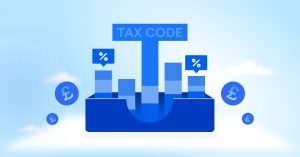When it comes to filing your corporation tax return, there are various claims and deductions that businesses can make in order to reduce their tax liability. One such claim is the corporate tax loss carry back, which allows companies to offset their trading losses against any profits made in the previous year. This results in a reduction of taxable income, leading to a lower tax bill for the business.
What is Corporate Tax Loss Carry Back?
Corporate tax loss carryback is a claim made by businesses while filing their corporation tax return or amended corporation tax return from HMRC. It allows companies to carry forward any capital losses they have incurred and deduct them from their later capital gains. The losses can be carried forward indefinitely, providing businesses with some flexibility in terms of when they choose to use them.
The period for carrying corporate losses back is 12 months, so you can offset the losses against any profit for the same accounting year then you can claim the rest of the losses from the past 12 months.
For example; if your company has made a £5000 loss and £20,000 profit in the financial year 2022/2023. By applying carryback rules you can offset this £5000 loss against £20000 and your profit will be £15000, that means you`ll pay less corporation tax, but because you have already paid the previous year's tax in full, you can now claim the margin in the next accounting year, 2023/2024
How to Carry Corporate Losses Forward?
In order to carry corporate losses forward, businesses must first determine the amount of loss that can be carried. This is known as the "ct cap," which limits the amount of trading losses that can be offset against profits in a given year. The ct cap is calculated by taking your total taxable profits and reducing it by any other deductions, such as capital allowances or group relief.
For example, if your total taxable profits are £100,000 and you have capital allowances of £10,000 and group relief of £5,000, your ct cap would be £85,000 (£100,000 - £10,000 - £5,000).
Once the ct cap is determined, businesses can then offset their trading losses against this amount, with any remaining losses available to be carried forward to future years.
Understanding Corporate Loss Restrictions for HMRC
When it comes to claiming corporate tax loss carryback, there are certain restrictions and limitations in place that businesses need to be aware of. These restrictions aim to prevent companies from artificially creating or exaggerating losses in order to reduce their tax liability. For example, HMRC has introduced a 'ct cap' which limits the amount of losses that can be carried back to 50% of the profits made in the previous year.
You can always have your losses calculated with our corporation tax calculator
How Corporate Losses Can Be Used
There are various ways in which corporate losses can be used, depending on the type of loss and the specific rules set by HMRC. Some common methods include:
- Carrying losses back to previous years: As discussed, businesses can carry forward their losses and offset them against profits made in the previous year. This can result in a tax rebate for the business.
- Carrying losses forward to future years: If a company is unable to use its trading losses in the current or previous year, it can carry them forward and use them to reduce profits in future years.
- Group relief: In some cases, losses incurred by one company within a group can be offset against profits made by another company within the same group. This is known as 'group relief' and can result in a reduction of the overall tax liability for the group.
- Surrendering losses to other companies: Companies can also choose to surrender their trading losses to other companies, allowing them to be offset against their profits instead. This can be beneficial for companies that are not able to use their losses themselves.
It is important for businesses to carefully plan and strategize how they use their corporate losses in order to maximize their tax savings. Seeking advice from a tax professional can also help ensure that the claims are made correctly and within the guidelines set by HMRC.
Conclusion
In conclusion, corporate tax loss carry back is a valuable tool for businesses to reduce their tax liability and manage their finances effectively. By understanding the rules and restrictions set by HMRC, companies can make informed decisions about how they utilize their losses to benefit their business in the long run. If you need further assistance with your corporation tax calculations and claims, do not hesitate to seek professional advice. So, claim your corporate tax loss carry back while filing your corporation tax return and save money on your taxes. Remember, every little bit counts!













